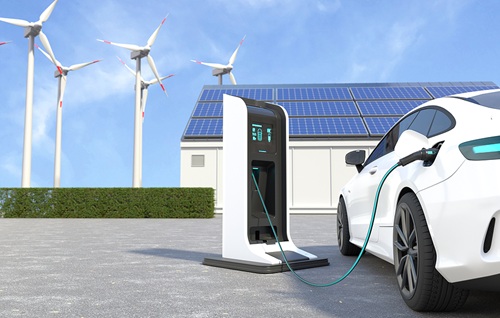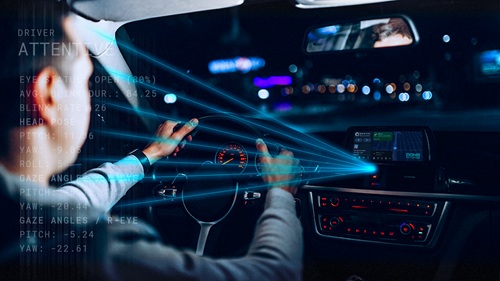Small Cars, Electric Cars, Estate Cars, Driverless Cars & Car Design
Just when you think you have the world of motoring figured out, new trends emerge that take both the industry and drivers by surprise.
With 2025 only halfway through, we’ve already seen unexpected shifts in the car market, evolving automotive design, and the progress of future car technologies.
In particular, five standout trends have caught our attention, reshaping how we think about small cars, electric cars, estate cars, driverless technology and car design.
Here’s our mid-2025 review of the top 5 car trends that have surprised us so far this year…
1. Small Cars: Why Compact Car Design Is Thriving in 2025
The received wisdom is that small cars are too hard to make any money on. Car companies have long complained that small cars require the same investment as a larger car - the same safety technology, the same in-car entertainment tech, the same batteries or the same lean-burning petrol or hybrid engines, and yet they have to be sold at a smaller price or they don’t make sense. 2025, following the death of the Ford Fiesta in 2023, was supposed to be the year when car makers essentially abandoned small cars and just made a grey mass of SUVs.
It hasn’t happened, though. In fact, one of the outright stars of 2025 has been the new all-electric Renault 5, which is a very compact machine indeed, and is not only (relatively…) affordable, but it’s also gorgeous and fun to drive. It’s so good, that you almost overlook the fact that it’s also electric. And not only does Renault reckon it can make a decent profit on the 5 (and on the closely related new Renault 4 too) it can even do so when the 5 and its battery are both made in France.
In other areas, small cars have been given a reprieve, changes to the proposed Euro7 emissions regulations essentially gave a stay of execution to the likes of the Renault Clio and VW Polo, which can only be good news for those looking for sensible, safe, stylish, and small transportation. Equally, if you’re looking for something more affordable, the Dacia Sandero raced to the number-one sales spot in Europe last year, overtaking the bigger, much more expensive, Tesla Model Y on the way to doing so. Small cars, then, thankfully are not dead. In fact, they’re getting even better.
2. Electric Cars: Why EVs Are Now More Affordable Than Ever

One of the most common reasons for people not to buy an electric car is that they’re thought of as being too expensive. There are other worries too, of course — range, charging, battery reliability, but this ‘too expensive’ lark we can properly just wipe out now. The cheapest car of all that’s currently on sale in Ireland is a Dacia Spring, costing €14,995, and that is a fully-electric car. OK, so it’s the most basic model possible with only a 45hp motor, 225km of range, and no fast-charging option (although you can have that, and a 65hp motor, for only €1,000 more). If the Spring is a little too hair-shirt for you, then there’s always the Hyundai Inster, a small hatchback masquerading as a crossover, which is brilliant to drive, has a classy cabin, goes for up to 360km on one charge, and has a starting price of €19,345. The aforementioned Renault 5 EV has a starting price of €25,995, or there’s the Jeep Avenger for €29,995. That electric Jeep is the same price as the basic 1.2-litre petrol version, and that price parity is being echoed elsewhere — a Peugeot E-3008, with its 520km range, is actually €60 cheaper than the same car with a hybrid petrol engine. How has this happened? Rampant competition from Chinese brands has helped push prices down, but more importantly the plummeting cost of batteries has really helped. EVs are now cheaper than ever, and that’s only going to keep improving in the coming years.
If you’re thinking about buying a used electric car, it’s especially important to understand the condition of its battery — the most expensive component in an EV. Before you buy, check out our guide to the Electric Vehicle Battery Health Check — it could help you make a more informed decision.
3. Estate Cars: Practical Car Design Returns
As with small cars, estates were supposed to have been killed off by SUVs by now. Soaring demand for pointlessly large and chunky SUVs has meant that the number of estate cars on sale has plummeted. Indeed, so bad did things get that Volvo, the company most famed for its estates, actually pulled the V60 and V90 models from the UK car market last year. However, the funniest thing happened in 2025. Estate cars rallied. Now, it might be a dead-cat bounce but Volvo saw enough demand to bring the V60 and V90 back to the UK market, which is only a good thing. Meanwhile, in the US market, BMW is reporting that sales of its astonishing 727hp M5 super-saloon are actually tilting in favour of the estate model, and this in a market in which most car makers have entirely stopped offering estates. Volkswagen introduced the estate version of its ID.7, the ID.7 Tourer, which is the loveliest version by far, while Skoda stuck to its estate guns with the frankly awesome Superb estate, which now comes with a plug-in hybrid version that can manage more than 120km of electric-only range and which is, in all honesty, one of the best cars of the whole year, while Audi launched the gorgeous new A6 Avant in both hybrid and all-electric guises. It’s not quite a Lazarus moment for estates, the encroachment of SUVs continues apace, but there might be better news in the years to come. SUVs are just inherently inefficient, so if we want to be able to get the best range from our electric cars, then it makes sense to design those EVs to be lower-slung and sleeker. And if car buyers, having become used to the practicality of an SUV, want to find a more efficient, longer-range alternative… well, the estate has been there the whole time.
4. Driverless Cars: Why Autonomous Car Design Took a Step Back

While headlines continue to shout ‘the robot cars are coming’ on a more or less daily basis, the truth is that seems not to be happening. There’s a lot of noise made about self-driving cars, and robotaxis, but the fact is that autonomous car technology is still incredibly expensive, and it doesn’t seem to be getting any cheaper. Equally, robotic cars, which we were promised would be so smart that they’d never have an accident have repeatedly been involved in accidents in major testing programmes in the US. Worse, their sensors can be confused or blocked by home-made fake road signs, or just popping a plastic bag over one of their crucial sensors. Equally, one major robotaxi operator in the US had to politely ask customers not to get up to… ahem… naughty things while using their cars. While the debate over the efficacy and even the usefulness of robot cars rages, one major car company has broken ranks from the rest and said that it doesn’t think the tech is worth the money. Renault has said that self-driving technology will be useful for public transport, driverless buses and trains and so on, but that it will be too expensive to be fitted to a privately-bought car. Instead, Renault is going to concentrate on developing robot tech for buses, while private cars will be given the best electronic assistance tech for safety’s sake, but a human driver will continue to be needed.
5. Car Design Trends: Why Buttons Are Making a Comeback
Massive digital screens are now the in-thing when it comes to modern car design. Some touchscreens are bigger than the telly at home when we were growing up, and modern cars essentially rely on them to function, which is odd. Odd because we’re constantly told that it’s dangerous to look at our phones when we’re driving and there are fines and penalty points to back that up, but apparently it’s OK to have a screen the size of a small table on which all of the car’s controls live. Well, that might be starting to change. Some car makers, Hyundai, notably, have started to say that more and bigger screens are not the way to go. Meanwhile, crash test and safety experts at Euro NCAP have announced that starting next year, any car maker that relies entirely on screens for in-car controls will no longer be eligible for a full five-star safety rating. Euro NCAP’s Technical Director, Richard Schram, commented on the plans: “Euro NCAP will indeed incentivise OEMs to have physical, easy-to-use, and tactile controls of the main driving features like wipers, warning lights, and indicators.”
This shift is reshaping dashboard design trends and influencing how manufacturers balance technology with driver-focused car design ensuring that tactile controls remain part of the driving experience.
The Key Car Trends Shaping 2025
Car trends for 2025 continue to evolve, with small cars thriving, electric cars becoming more affordable and better designed, estate cars making a practical comeback, driverless car technology facing real-world challenges, and a renewed emphasis on intuitive, safe car design.
Whether you’re considering your next car purchase or simply following the latest automotive design trends, these shifts offer a clear view of where the motoring world is heading.
And if you’re thinking about buying a used car, make sure to run a full car history check first — so you can buy with confidence.